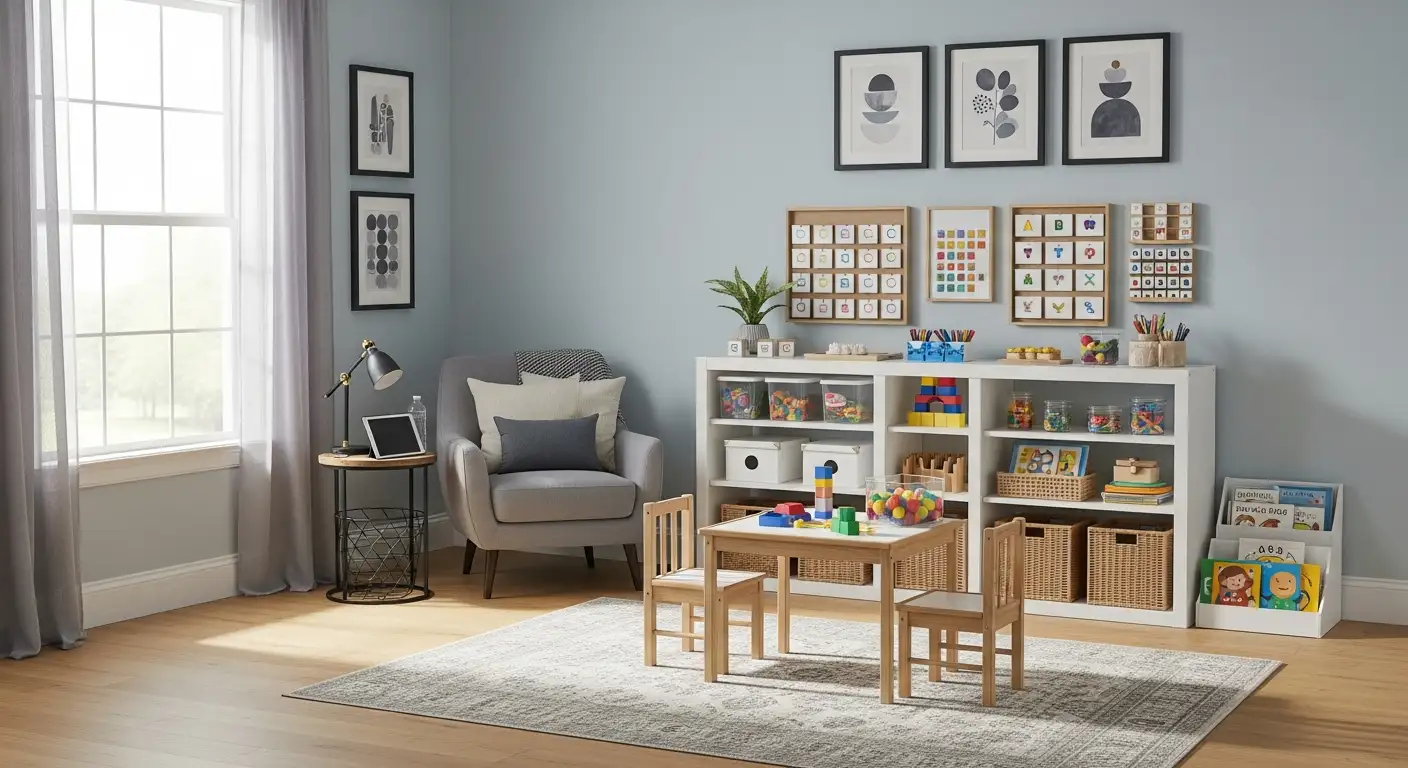Understanding ABA and Its Role in Autism Therapy at Home
Applied Behavior Analysis (ABA) is recognized as an evidence-based therapy that supports individuals with autism spectrum disorder (ASD) in developing critical skills across communication, social interactions, and daily living. Implementing ABA strategies at home enhances the generalization and maintenance of skills learned during therapy sessions. This article provides a comprehensive guide on how parents and caregivers can effectively use ABA behavioral strategies within the home environment, ensuring consistency and fostering positive developmental outcomes.
What Is Autism Therapy and ABA's Central Role
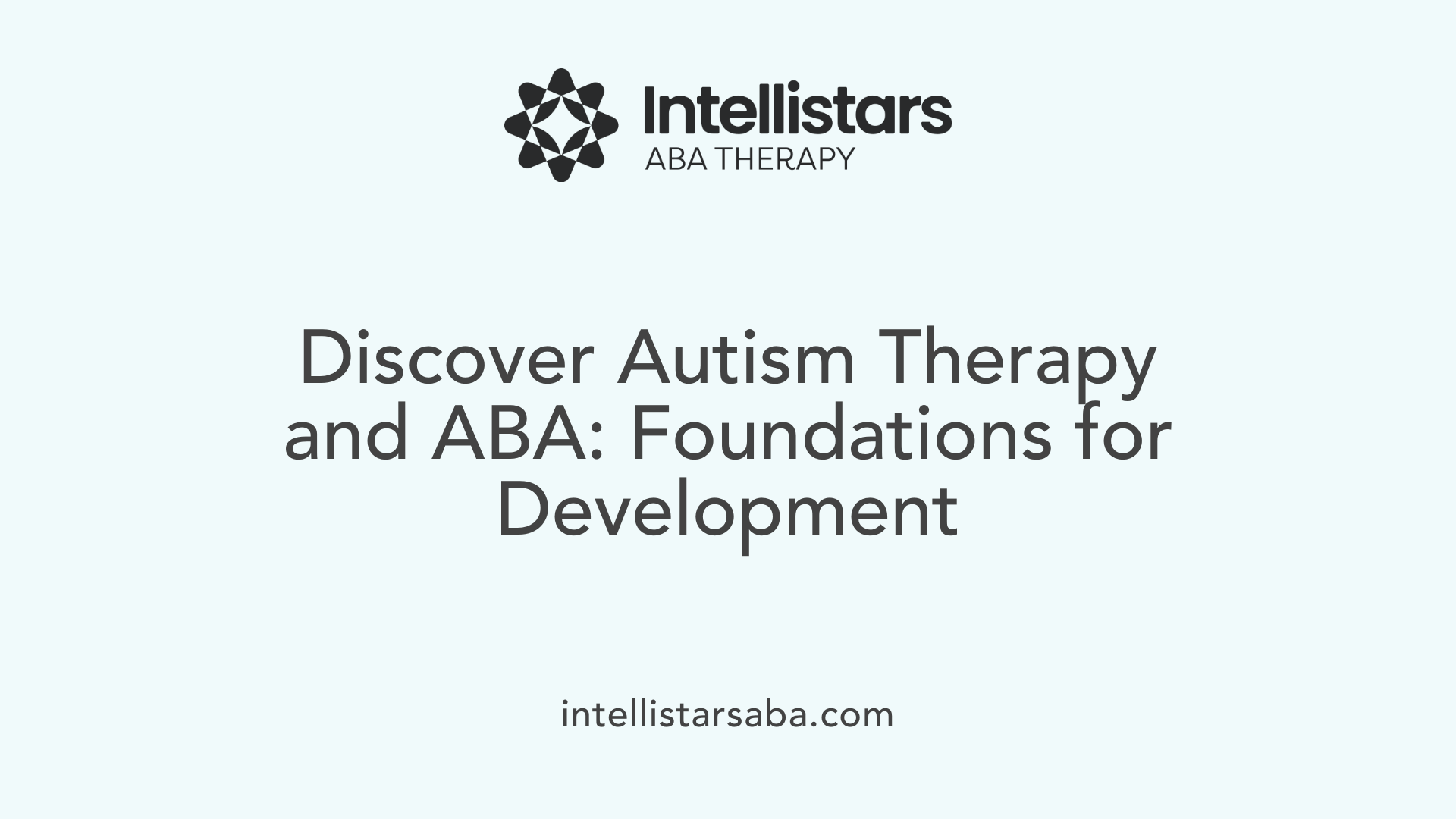
What is autism therapy and what methods are commonly used?
Autism therapy refers to a range of interventions designed to support individuals with autism spectrum disorder (ASD) in developing social, communication, behavioral, and daily living skills. Among the various approaches, Applied Behavior Analysis (ABA) stands out as a core therapeutic method widely recognized and backed by research.
Other common interventions include speech and language therapy, which focuses on improving communication; occupational therapy, targeting daily life skills and sensory integration; and social skills training to enhance peer relationships. Early intervention involving personalized, evidence-based therapies generally results in the most significant developmental progress.
ABA as a core therapeutic approach
ABA employs behavior modification principles to reinforce positive behaviors and decrease negative or challenging ones. It is tailored individually, with treatment plans created by Board Certified Behavior Analysts (BCBAs), and involves structured teaching methods such as Discrete Trial Training (DTT), Pivotal Response Treatment (PRT), and the Early Start Denver Model (ESDM).
ABA therapy emphasizes positive reinforcement and functional communication training, helping children develop meaningful skills in socialization, communication, and daily living. Typically, ABA therapy is most effective when provided intensively during early childhood, often more than 20 hours per week, which can lead to substantial developmental gains.
Goals of autism therapy
The overarching goals of autism therapy include improving social interactions, enhancing communication abilities, increasing flexibility and adaptability, and reducing challenging behaviors. Through these interventions, individuals with autism improve their ability to function in daily life and participate meaningfully in social and educational environments.
A collaborative approach involving therapists, caregivers, and families ensures consistent practice and reinforcement across settings, maximizing the benefits of therapy.
How ABA Helps Individuals with Autism and Its Benefits at Home
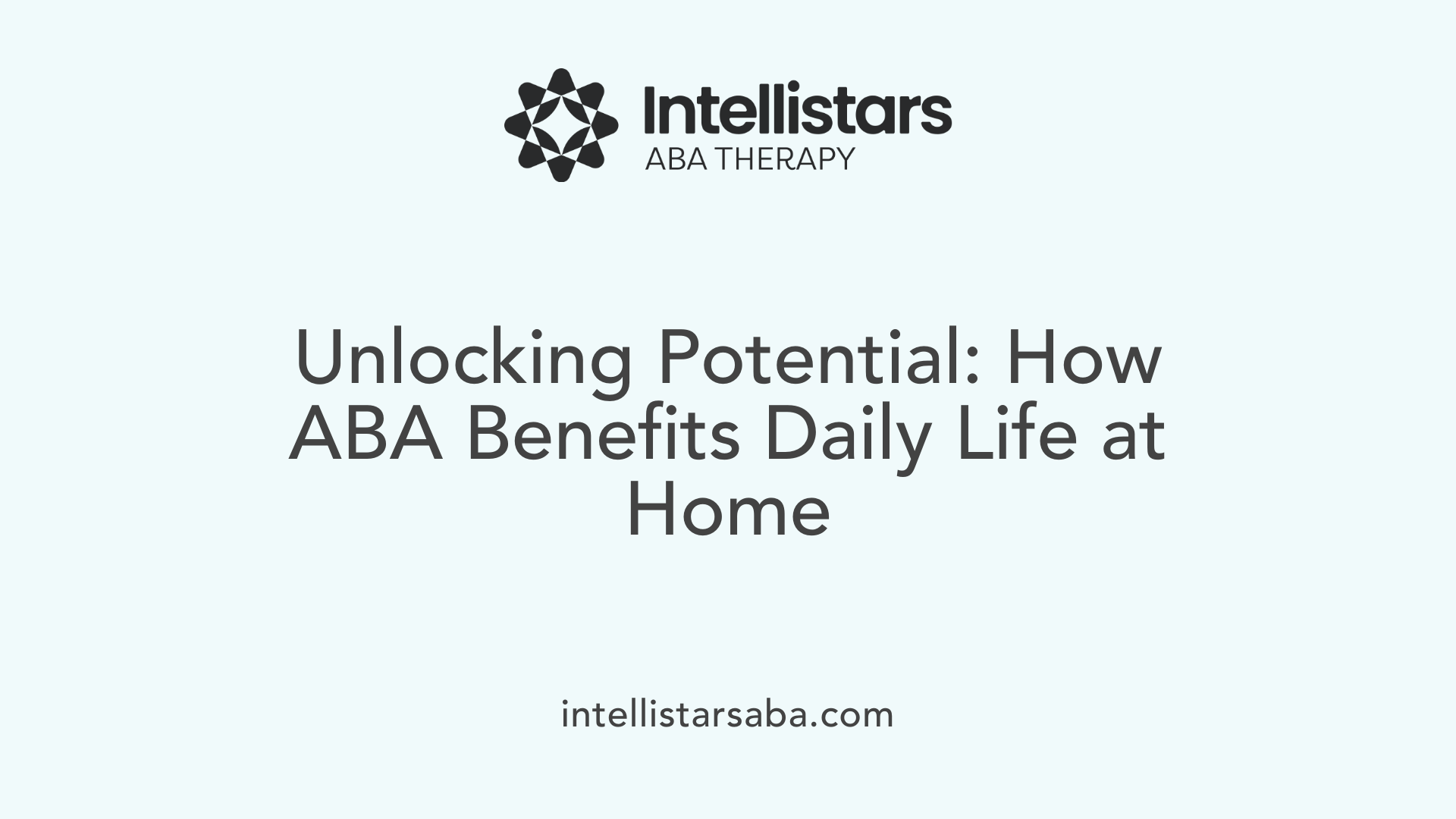
How Does Applied Behavior Analysis (ABA) Help Individuals with Autism?
Applied Behavior Analysis (ABA) is a research-backed therapy designed to improve the lives of children with autism through tailored interventions. ABA works by increasing positive behaviors and teaching new skills while decreasing behaviors that may be challenging or harmful.
ABA Techniques and Strategies
ABA employs various personalized techniques, including:
- Positive Reinforcement: Encouraging desirable behavior by rewarding it with treats, stickers, or extra playtime.
- Prompting and Fading: Assisting a child to perform a behavior and gradually reducing help.
- Functional Communication Training (FCT): Teaching children to request help or breaks, reducing frustration.
- Discrete Trial Training (DTT): Structured teaching of specific skills one-on-one.
- Natural Environment Teaching (NET) and Pivotal Response Treatment (PRT): Using play and interests to motivate learning.
- Use of Visual Supports: Visual schedules and social stories help children understand routines and anticipate changes, reducing anxiety.
Skill Development Areas Targeted by ABA
ABA focuses on key developmental areas such as:
- Communication and language skills
- Social skills and interactions
- Cognitive skills like problem-solving
- Self-care and daily living activities
- Emotional regulation and flexibility
Importance of Early and Intensive ABA Therapy
Early intervention, especially when ABA therapy is provided more than 20 hours a week before the age of four, results in significant developmental gains. These early gains help reduce the need for more intensive services later. Therapy is tailored to each child's needs and regularly adjusted by expert Board Certified Behavior Analysts (BCBAs).
Impact of ABA on Quality of Life
Through learning functional communication and social skills, children become more independent and engaged. Behavior management improves daily functioning and reduces frustration and meltdowns, enhancing overall quality of life.
Role of ABA in Behavior Modification
ABA aims to understand why behaviors occur and apply strategies to increase positive behaviors while decreasing negative ones. This is achieved through:
- Functional Behavior Assessments (FBAs) to identify behavior purposes
- Teaching functional alternatives to replace challenging behaviors
- Consistent reinforcement and adjustments in the home and therapy environment
Benefits of At-Home ABA Implementation
Parents play a vital role by collaborating with therapists and maintaining consistent practice of ABA strategies at home. Creating structured environments with visual supports and calm spaces helps children generalize skills learned in therapy to everyday life.
Implementing ABA Strategies at Home: Setting Up and Maintaining Consistency
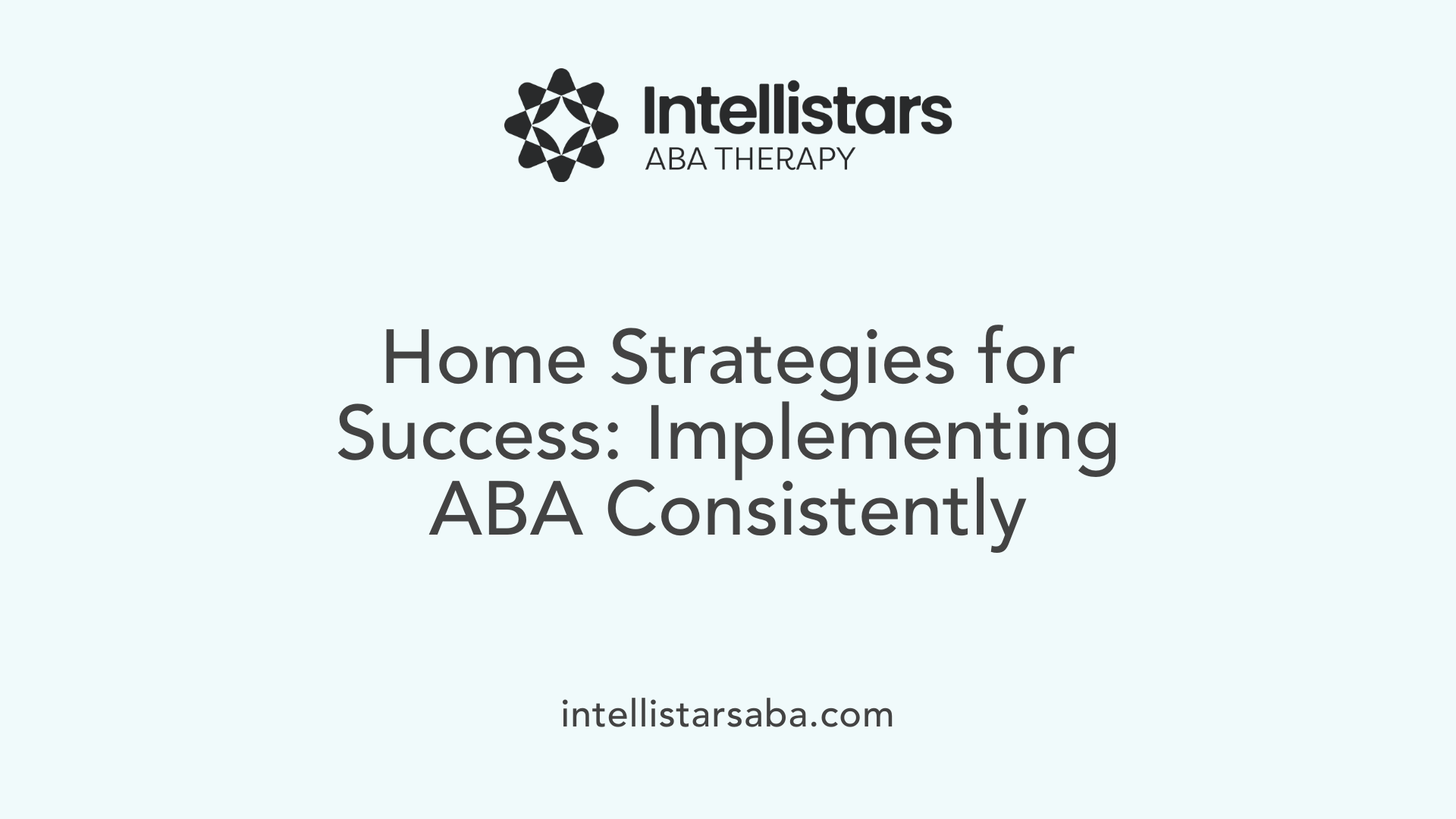
Creating a structured home environment
Establishing a quiet, well-lit, and organized space dedicated to ABA activities at home can greatly enhance the effectiveness of therapy. This area should have easily accessible materials and minimal distractions to help the child focus and feel comfortable during sessions.
Use of visual supports like schedules and reward charts
Visual supports such as daily schedules and reward charts help children anticipate and understand routines, reducing uncertainty and promoting predictability. These tools reinforce positive behavior and provide clear expectations, making transitions smoother.
Importance of consistency in routines and reinforcement
Consistency among caregivers in following routines and applying reinforcement strategies is crucial for child progress. Regular practice of skills learned during therapy, combined with consistent reward systems, supports generalization of behaviors across settings.
Role of parent collaboration with therapists
Active collaboration between parents and ABA providers ensures that therapy plans remain individualized and effective. Parents can reinforce strategies at home, communicate challenges and successes, and adjust approaches alongside their child’s therapist.
Core ABA principles such as prompting and fading
Prompting helps guide children to perform desired behaviors, while fading gradually reduces assistance to promote independence. Implementing these principles at home supports skill mastery and encourages self-reliance in daily tasks.
Effective Behavioral Techniques for Handling Change and Building Flexibility

Visual Supports and Schedules to Support Predictability
Visual schedules are powerful tools within ABA therapy that help children with autism understand what to expect throughout their day. By clearly outlining upcoming activities, these schedules reduce uncertainty and create a predictable routine. This predictability is especially valuable during periods of transition, making changes less stressful for the child.
Social Stories to Explain Change
Social stories use short, personalized narratives to describe upcoming changes or new situations. These stories help children mentally prepare by explaining what will happen and why. This approach enables children to anticipate and understand change in a clear, supportive way.
Gradual Exposure and Role-Playing for Easing Transitions
Gradual exposure introduces changes in small, manageable steps, preventing overwhelming reactions. Complementing this, role-playing offers children a chance to practice and familiarize themselves with new situations ahead of time. Together, these strategies decrease anxiety and build confidence in adapting to change.
Positive Reinforcement for Flexible Responses
Encouraging adaptability is a core aspect of ABA, achieved through positive reinforcement. When children demonstrate calm or flexible behaviors, they may be rewarded with items like stickers, snacks, or extra playtime. This reward system motivates children to respond positively and consistently to changes in their environment.
Functional Communication Training for Asking Help or Breaks
Functional Communication Training (FCT) equips children with essential skills to ask for assistance or request breaks when needed. This form of communication minimizes frustration and helps prevent meltdowns by enabling children to express their needs effectively in challenging moments.
Use of Calming and Coping Tools
ABA incorporates sensory toys, deep breathing exercises, and other calming tools to support children’s self-regulation during transitions. Providing these tools allows children to manage anxiety and maintain focus, promoting smoother adjustment to change.
Professionals Involved in ABA and How Families Can Collaborate
Who Provides Autism Therapy, and What Qualifications Do Professionals in This Field Typically Have?
Autism therapy involves a collaborative team of specialists, prominently including Board Certified Behavior Analysts (BCBAs), who oversee Applied Behavior Analysis (ABA) interventions. Other professionals such as speech therapists, occupational therapists, psychologists, special education teachers, and autism specialists also contribute to comprehensive care.
These practitioners generally possess advanced degrees in education, psychology, speech-language pathology, or occupational therapy. Importantly, many hold certifications like BCBA or Certified Autism Specialist (CAS), which require rigorous supervised training, continuing education, and successful completion of competency exams. Such credentials ensure that providers are well-equipped with evidence-based strategies tailored to meet the unique needs of each child.
The Role of Individualized Treatment Plans and Assessments
Each child's therapy journey starts with a detailed assessment conducted by qualified providers. These evaluations form the basis for personalized treatment plans targeting communication, social development, and daily living skills. Board Certified Behavior Analysts design these interventions using data-driven methods proven to foster meaningful progress.
Collaboration Between Parents and Professionals
Families play a vital role in maximizing ABA's effectiveness by working closely with therapists. Regular communication, consistency in implementing strategies at home, and attending training sessions help reinforce skills learned during therapy. When parents collaborate actively with providers, children benefit from enhanced generalization of skills and improved outcomes across environments.
In essence, the combined expertise of certified professionals and engaged family members creates a supportive network that advances the growth and development of children with autism through ABA and related therapies.
Innovations Enhancing Autism Therapy and Their Implications for Home Practice
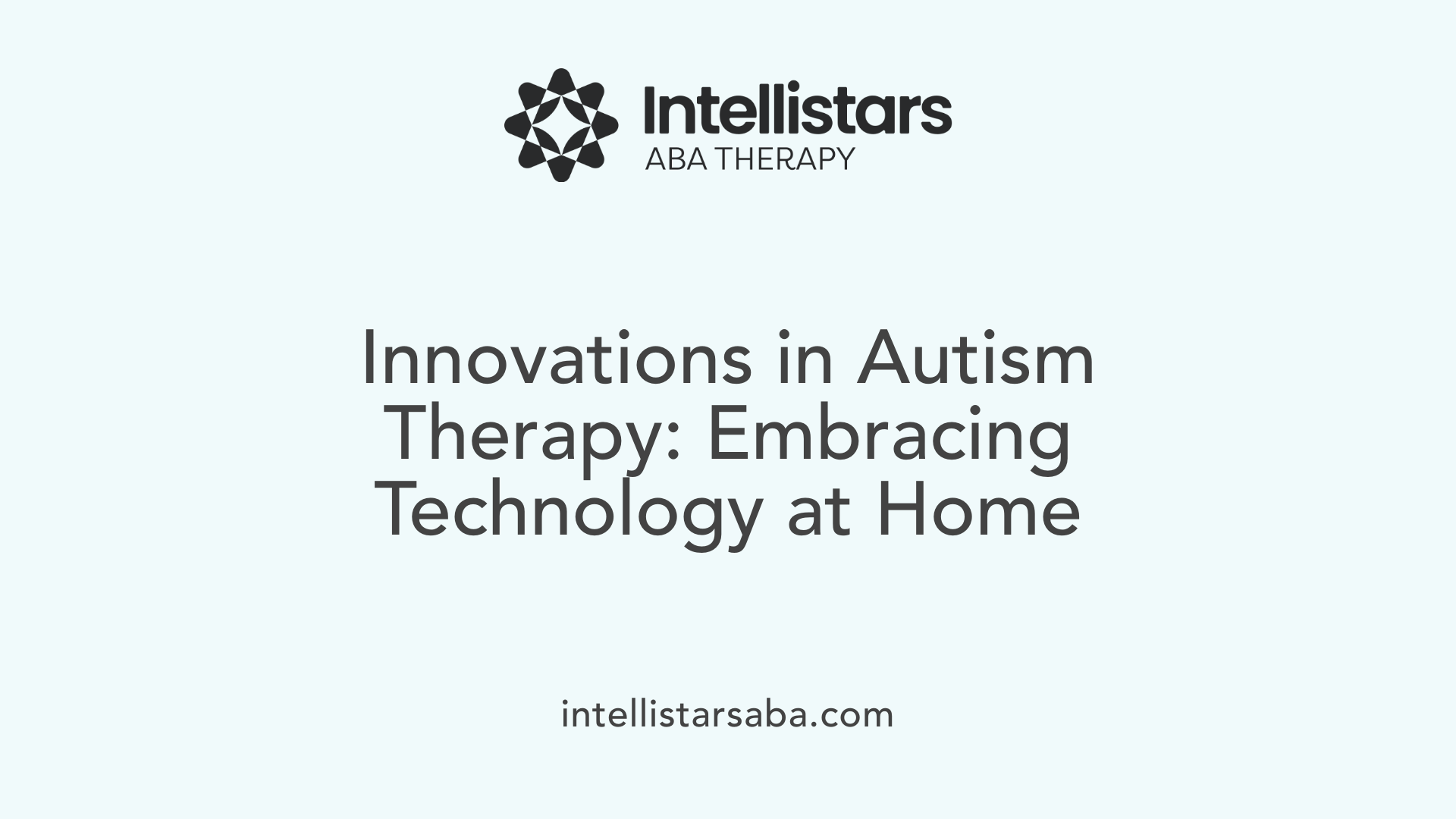
What are the latest developments or innovations in autism therapy?
Recent advances in autism therapy deeply integrate technology to boost the effectiveness of interventions, especially alongside established methods like Applied Behavior Analysis (ABA). Key innovations include AI-driven tools, virtual reality (VR), telehealth services, wearable devices, and specialized apps tailored to neurodiverse needs.
How are AI, VR, and telehealth transforming autism therapy?
AI helps therapists individualize treatment plans by analyzing behavioral data and predicting progress. VR creates immersive environments where children can safely practice social skills and adapt to real-life scenarios such as navigating a grocery store or playground, reducing anxiety about unfamiliar settings. Telehealth platforms expand access by enabling remote therapy sessions, parent coaching, and collaborative goal-setting regardless of location.
What role do digital and robot-assisted therapies play?
Robot-assisted therapies engage children in social and communication skills through interactive play. Digital cognitive behavioral therapy, music and rhythm applications, and biofeedback tools support emotional regulation and sensory integration. These technological tools encourage motivation and participation, complementing traditional hands-on techniques.
How do these innovations complement traditional ABA?
Technology enhances ABA by providing novel methods to reinforce learning. Wearables can monitor physiological responses for timely calming interventions, while apps provide visual schedules and reinforcement tracking. Telehealth enables consistent caregiver collaboration and more frequent progress assessments.
What is the potential for technology to aid parents in home implementation?
Digital tools empower parents to practice therapy goals in natural home settings, improving skill generalization. Interactive apps, video modeling, and telehealth coaching guide caregivers in real time to apply strategies effectively. Structured home environments enriched with technology facilitate consistent routines and support children's needs.
Integrating these innovations with ABA offers a personalized, accessible, and engaging pathway for children on the autism spectrum to develop communication, social, and daily living skills. Technology not only enhances therapist-led sessions but also transforms the home as a powerful environment for learning and growth.
Maximizing ABA Success Through Home Implementation
Implementing ABA behavioral strategies at home is a vital component of effective autism therapy, broadening the scope of learning beyond clinical settings into everyday life. By establishing structured routines, utilizing visual supports, practicing behavior management techniques, and embracing collaboration with qualified professionals, families empower children to develop vital skills in communication, social interaction, and adaptability. Advances in technology also provide new tools to support therapy efforts at home. With consistency, patience, and a tailored approach, caregivers can reinforce progress, improve outcomes, and contribute significantly to the child’s growth and independence.

